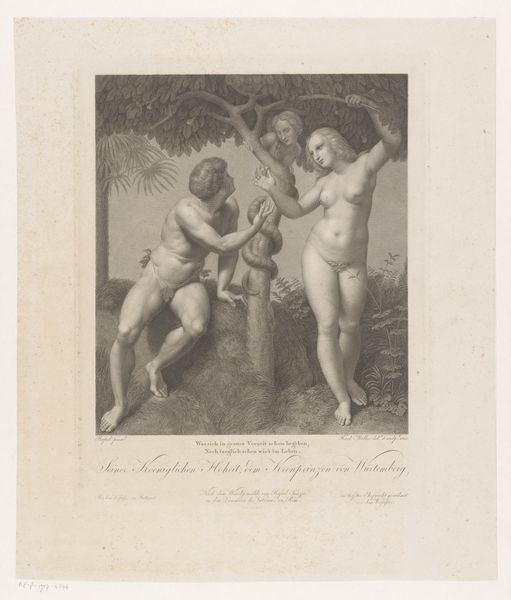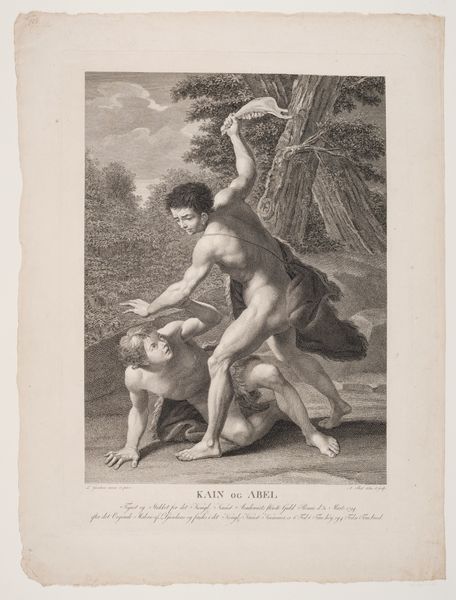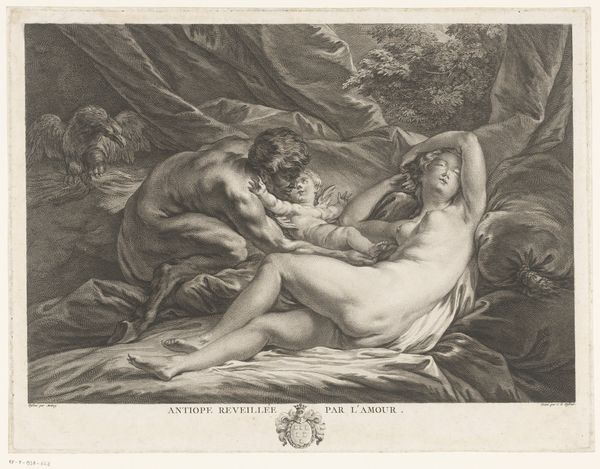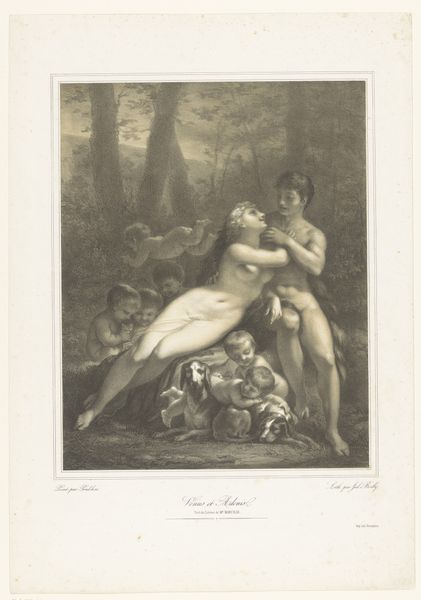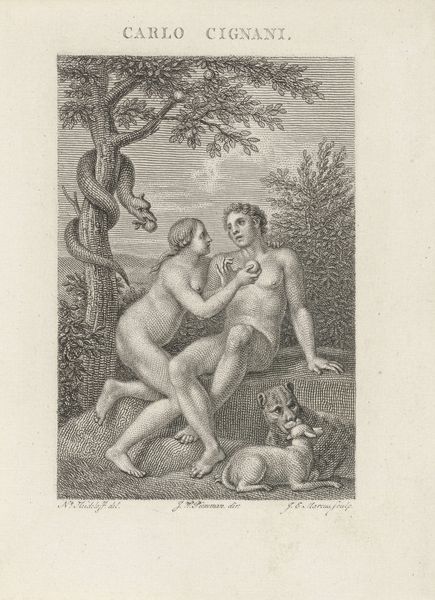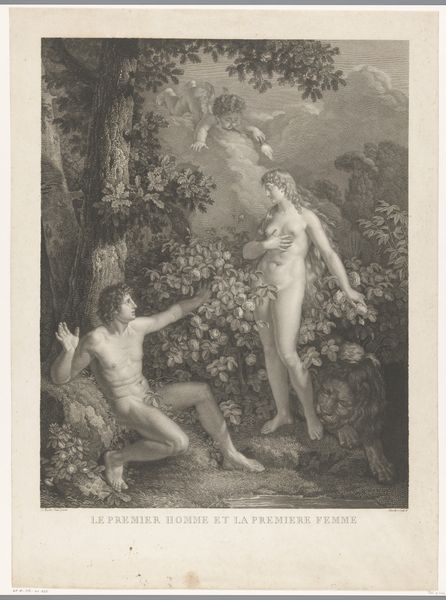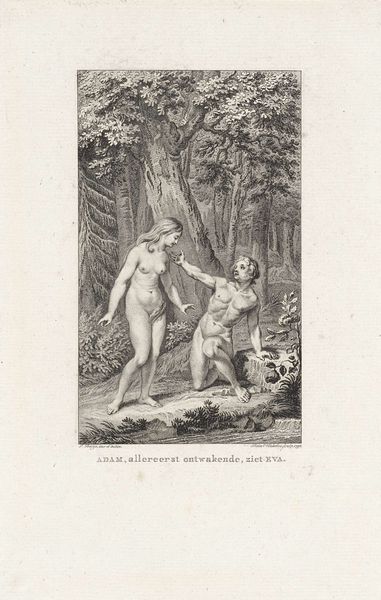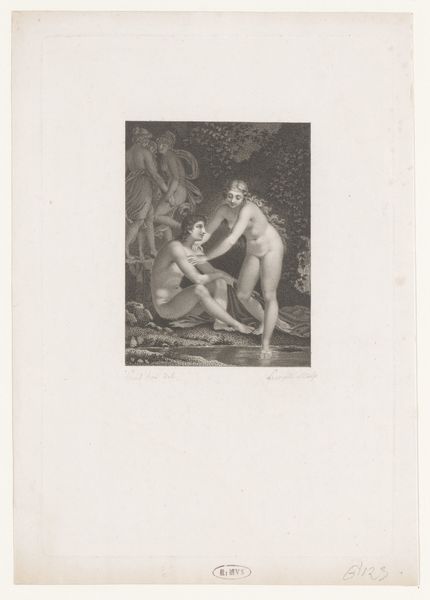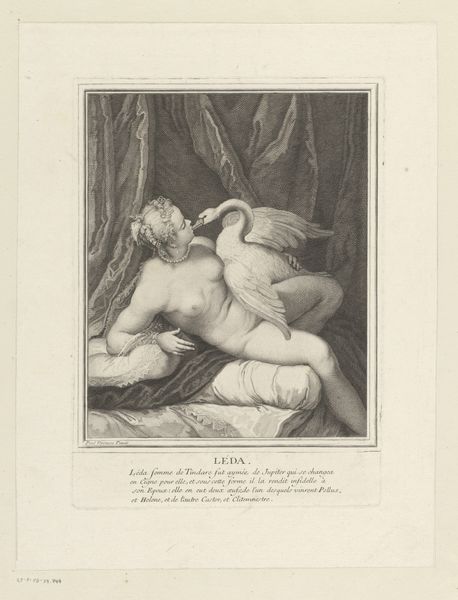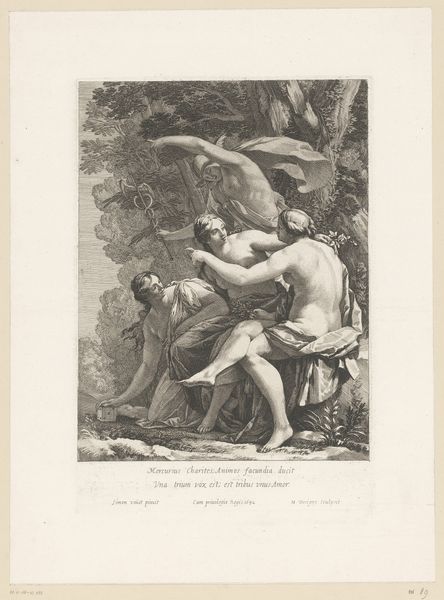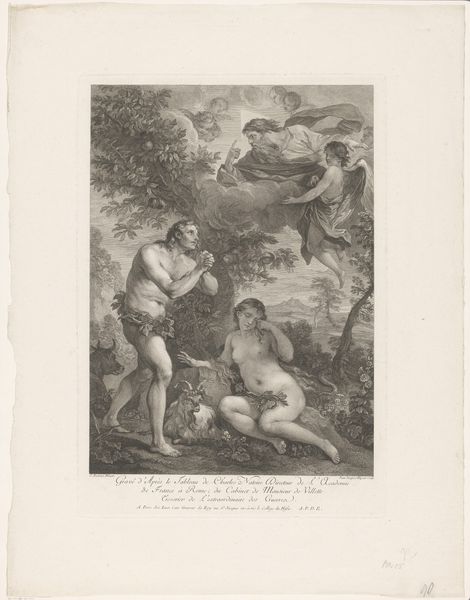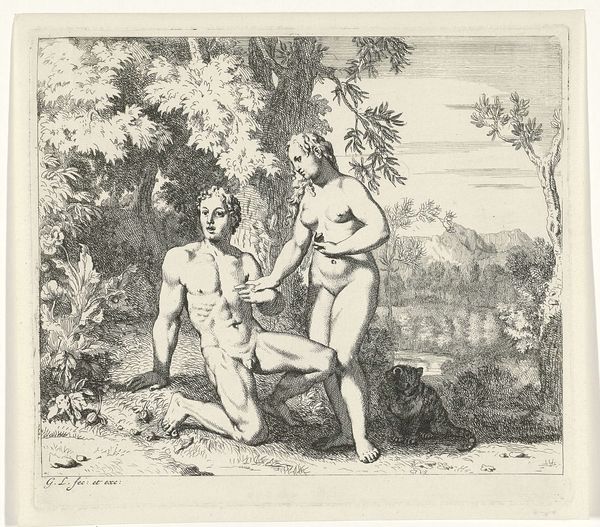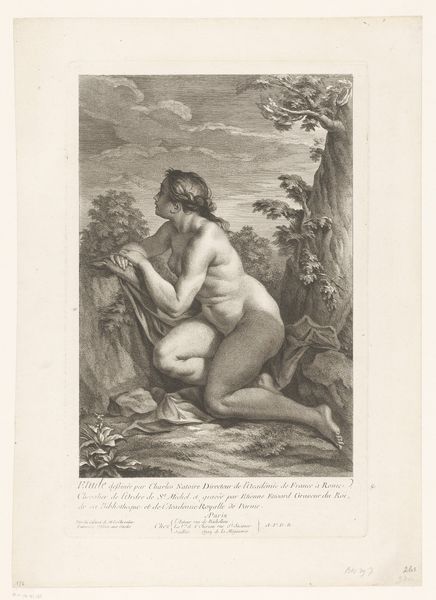
print, etching, engraving
#
pencil drawn
#
neoclacissism
#
light pencil work
#
narrative-art
# print
#
etching
#
pencil sketch
#
landscape
#
figuration
#
history-painting
#
tonal art
#
engraving
Dimensions: height 563 mm, width 430 mm
Copyright: Rijks Museum: Open Domain
Curator: Here we have "Daphnis and Chloe Bathing," a work by Joseph Lemercier created sometime between 1813 and 1887. It’s an engraving, currently held here at the Rijksmuseum. What strikes you first about this piece? Editor: The figures are so pristine and staged. Their nudity is almost… antiseptic. There is something unsettling to me about the almost clinical gaze. Curator: It reflects the Neoclassical style, a conscious revival of classical antiquity’s aesthetics. These artworks often played a vital role in constructing specific ideas about history. We see this especially with how ideas from art helped advance agendas that excluded marginalized identities. Consider the inherent power dynamics at play, reinforced by how the artwork's ownership, display, and interpretation function. Editor: The composition certainly directs our attention. The implied narrative and power dynamic, the supplicating man and the demure woman, really stands out when contextualizing it within social constructions. Are they a study in vulnerability, a testament to gendered roles? Curator: Lemercier, through this etching, engages in a larger artistic and social conversation. By referencing a classical story, it not only aimed to present beauty but to also promote ideals and morals accepted at that time, a period with strong social biases and gendered norms. The etching process itself, its accessibility and reproducibility, played a part in disseminating these messages widely. Editor: Looking at the landscape backdrop and even the treatment of water, one has to consider not only the historical gaze embedded within, but also its broader impact on other artists’ notions about representing nature. Was this received as romantic? How might interpretations differ when engaging with post-structuralist methodologies that center issues of power relations and dominant cultural ideologies? Curator: Absolutely. The interplay between classical mythology and its reception speaks volumes about the ongoing negotiations and reinterpretations of history, even to the current moment. It emphasizes the importance of addressing it from all social perspectives. Editor: This work clearly offers more than pretty scenes; it provokes critical considerations about the making and circulation of art and cultural value itself. Curator: Precisely, inviting viewers to understand its role and legacy critically, particularly as relates to cultural biases.
Comments
No comments
Be the first to comment and join the conversation on the ultimate creative platform.
